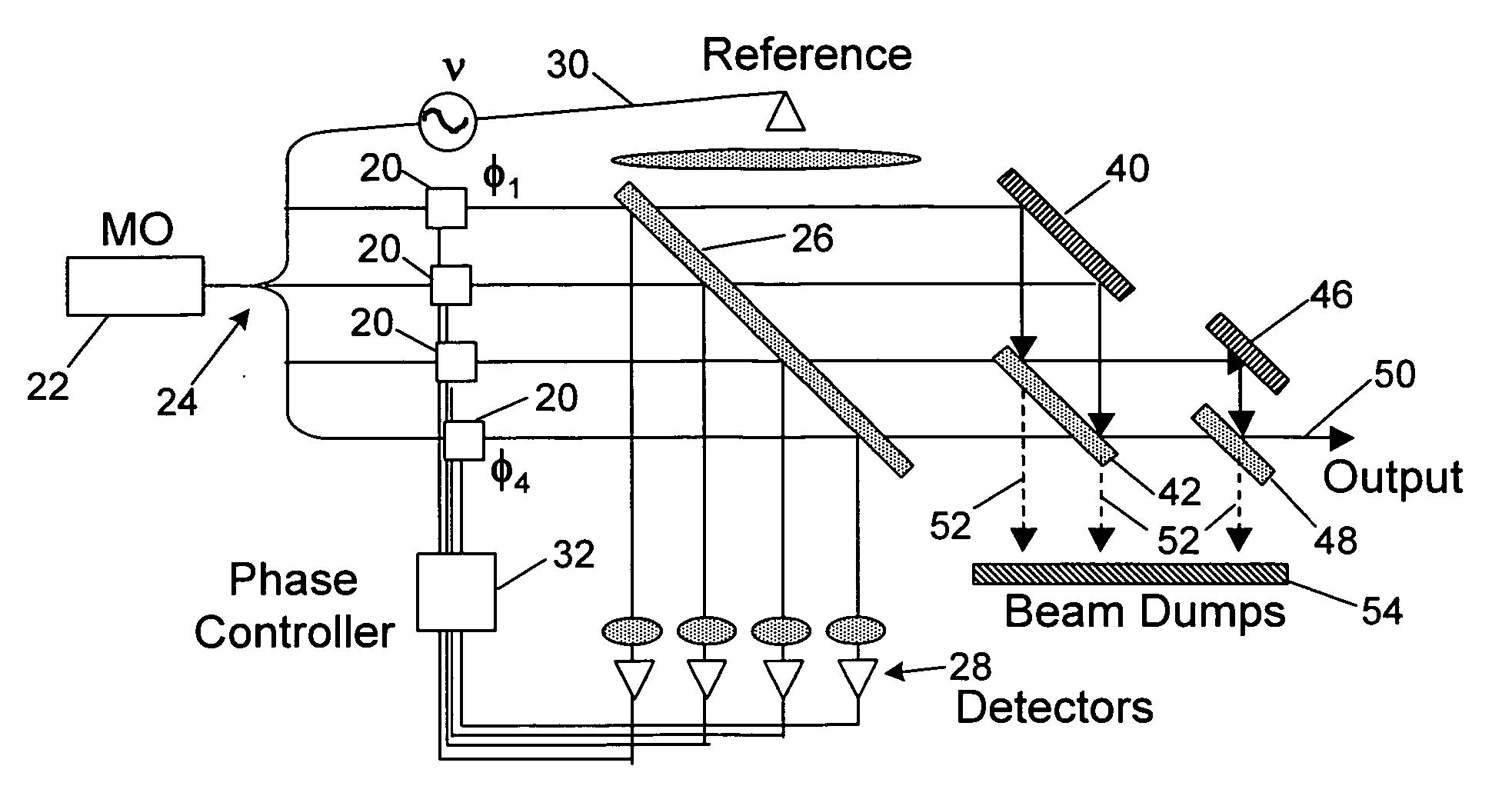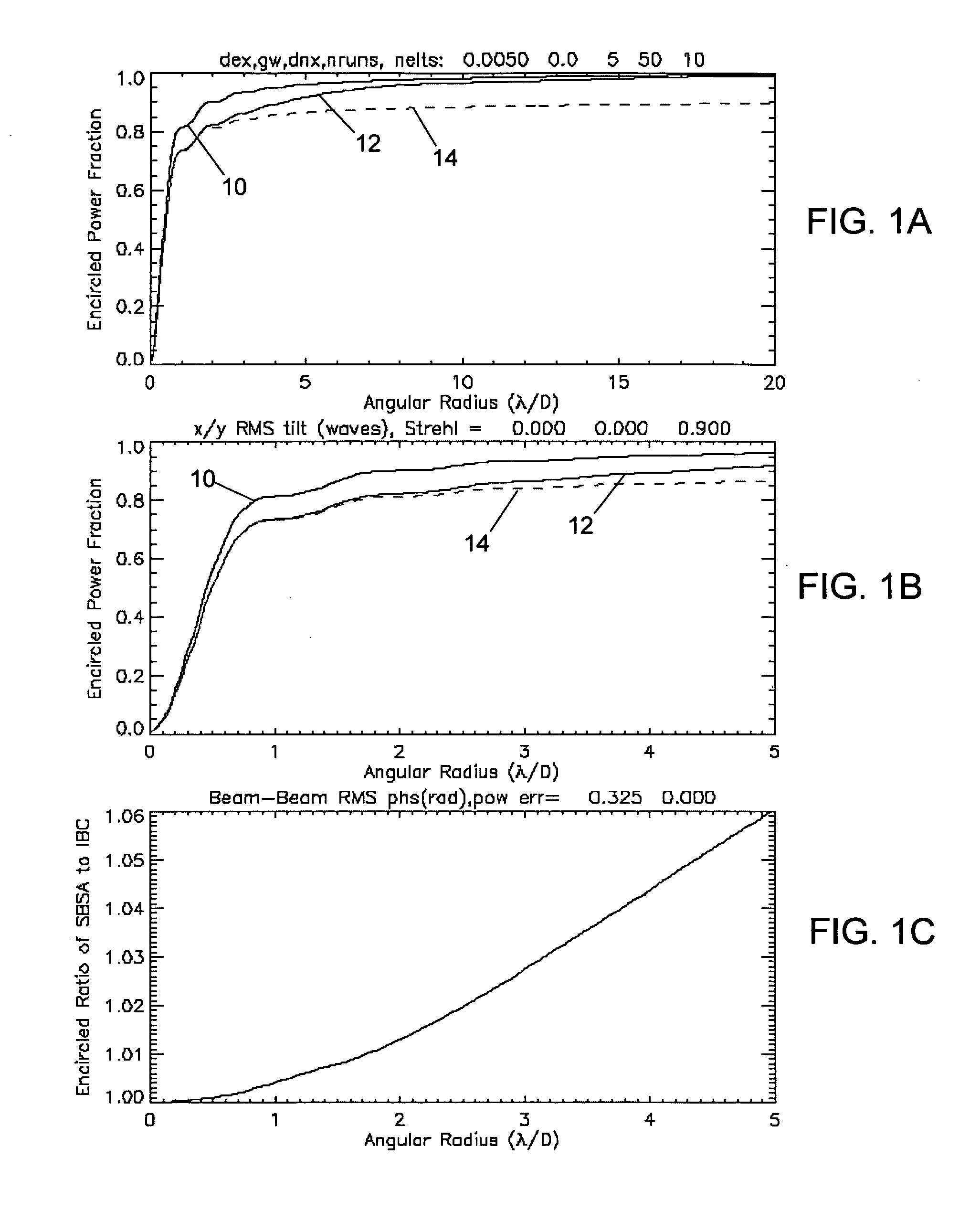Interferometric beam combination
a fiber amplifier and interferometer technology, applied in lasers, instruments, manufacturing tools, etc., can solve the problems of inability to achieve sbsa, especially a fiber array, to achieve the effect of maximizing the power delivered to the composite output beam, minimizing losses, and maximizing power delivered
- Summary
- Abstract
- Description
- Claims
- Application Information
AI Technical Summary
Benefits of technology
Problems solved by technology
Method used
Image
Examples
Embodiment Construction
[0020] As shown in the drawings for purposes of illustration, the present invention is concerned with combining the radiation emitted from multiple emitters in an array to produce a powerful composite beam having good performance characteristics, as measured, for example, by the Strehl ratio of the beam. The use of side-by-side arrays (SBSAs) of fibers necessarily results in a reduced Strehl ratio because of the less than ideal fill factor associated with closely packed fibers, and the peaked beam profile provided by each fiber. Another drawback of the prior art approaches to combining multiple coherent beams is that any alignment or other phase errors tend to be propagated through the entire optical system.
[0021] In accordance with the present invention, multiple beams are interferometrically combined in the near field (interferometric beam combination, or IBC), using any of a variety of optical techniques. IBC of N beams can be accomplished with a minimum of m beam splitters, whe...
PUM
| Property | Measurement | Unit |
|---|---|---|
| Ratio | aaaaa | aaaaa |
| Phase | aaaaa | aaaaa |
Abstract
Description
Claims
Application Information
 Login to View More
Login to View More - R&D
- Intellectual Property
- Life Sciences
- Materials
- Tech Scout
- Unparalleled Data Quality
- Higher Quality Content
- 60% Fewer Hallucinations
Browse by: Latest US Patents, China's latest patents, Technical Efficacy Thesaurus, Application Domain, Technology Topic, Popular Technical Reports.
© 2025 PatSnap. All rights reserved.Legal|Privacy policy|Modern Slavery Act Transparency Statement|Sitemap|About US| Contact US: help@patsnap.com



